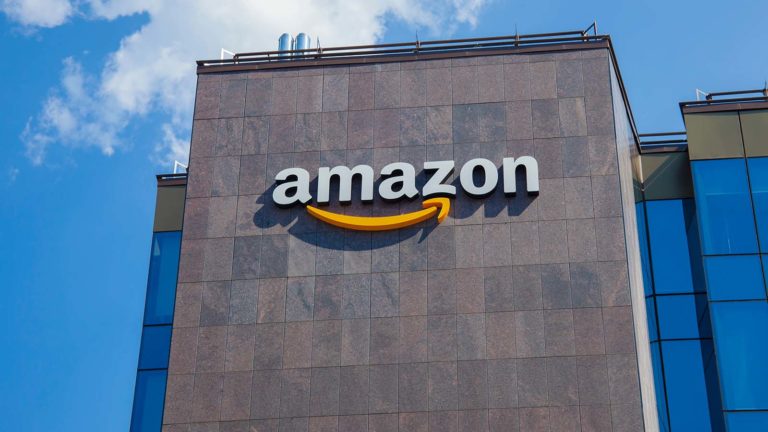Prime Video and Amazon MGM Studio businesses announced hundreds of job cuts on Jan. 10. The news from Amazon (NASDAQ:AMZN) sent AMZN stock higher on the day.
“[W]e’ve identified opportunities to reduce or discontinue investments in certain areas while increasing our investment and focus on content and product initiatives that deliver the most impact,” The Hollywood Reporter noted Mike Hopkins comments, the executive in charge of its film and video initiatives.
Hundreds of jobs are a small amount for Amazon. It employed over 1.5 million people as of Dec. 31, 2022.
On Jan. 8, Unity Software (NYSE:U), the San Francisco video game developer, announced that it would cut 1,800 jobs or about 25% of its workforce. Even if Amazon cuts 1,000 jobs, that’s not even one-tenth of 1% of its total headcount.
Reasonable capital allocation by businesses includes ensuring that every person employed is necessary for future success. Sometimes, that isn’t the case. This appears to be one of those times.
As we move into 2024, here are three reasons the cuts should be interpreted as a positive.
Ad Revenues and AMZN Stock
In December, I suggested that the company’s advertising business would continue to grow in importance. Through the nine months ended Sept. 30, its ad revenue was $32.3 billion, 23.3% higher than a year earlier, and $2.5 billion higher than its subscription services revenue.
With the launch of an ad-supported Prime Video tier in 2024, the gap between these two units will continue to grow. Why do a partnership with IPG Mediabrands to run ads on the Prime Video platform and then keep employees on the payroll who ostensibly are doing a job that its partner will handle?
I don’t know if that’s the case, but it seems there’s some duplication of duties between the two organizations, at least on the ad front. It can always hire more staff if the need arises.
I think it’s fair to say that Amazon’s ad business has gotten more automated in recent quarters, making the need for actual people less critical to its success.
The AI Allocation Must Get Larger
There isn’t any question that AI is one of Amazon’s most important revenue streams in the years ahead. With that in mind, it’s crucial to allocate as much human and investment capital to the areas that will produce the most future revenue and profits.
MGM Studios and Prime Video don’t make the cut relative to advertising and AI.
Cuts at these businesses shouldn’t surprise investors. Amazon didn’t buy MGM for its talent but instead its library of films and TV shows for Prime Video. That requires almost no staff to monetize. You throw a bunch of content on Prime and load ads onto the streaming platform at whatever ratio you see fit to run to produce the right balance between revenue and customer engagement.
A Jan. 8 article from Apoory Chaudhri, Amazon’s Director of Computer Vision and Machine Learning at Amazon Fashion, discussed four AI-powered innovations to help customers find the perfect fit in clothing sold through its e-commerce storefronts.
“The Fit Insights Tool uses an LLM model to extract and aggregate customer feedback on fit, style, and fabric. It contextualizes returns and size chart analyses with customer reviews, using machine learning to identify defects in size charts,” Chaudhri wrote.
“By leveraging this data, brands can better understand customer fit issues, improve how they communicate sizing to customers, and even incorporate the feedback into future designs and manufacturing.”
The result? Amazon gets fewer returns.
Now, by no means is this new, but it does emphasize the importance of staffing related to AI compared to MGM Studios and Amazon Prime. Proper staffing of the former is so much more critical to the future of Amazon than the latter.
Amazon Reaches Maximum Efficiency
Every large company wrestles with the maximum efficiency of its business. What I mean by that is that it gets to a level of efficiency where hundreds or thousands of employees leave the company, either by choice or by layoff, because productivity requires no additional energy output to get the same work completed by the remaining employees.
Tech companies are especially prone to overshooting their maximum efficiency, and the only way you can be sure you’re there is by understanding what duplication of duties exists and eliminating these overlaps. It’s not an exact science.
The good news for investors is that some of Amazon’s most profitable years could still be ahead of it despite its massive size.
So, while job reductions aren’t good (especially for those affected), it’s a sign the company is getting closer to maximum efficiency, which should increase profits with little additional effort from employees.
That’s an excellent thing for AMZN stock.
On the date of publication, Will Ashworth did not have (either directly or indirectly) any positions in the securities mentioned in this article. The opinions expressed in this article are those of the writer, subject to the InvestorPlace.com Publishing Guidelines.

